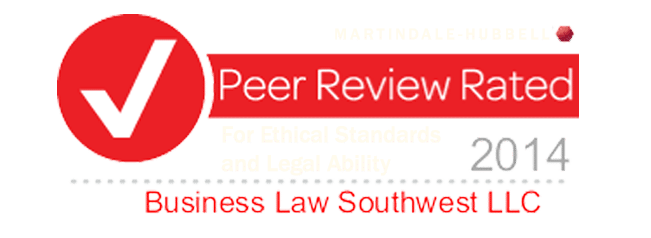What Does The New Mexico Healthy Workplaces Act Mean for You and Your Business?
On April 7, 2021, Governor Michelle Lujan Grisham signed into law an Act requiring payment of sick leave to workers throughout the state of New Mexico. NMSA § 50-17-1 through 12 (commonly referred to as the “Healthy Workplaces Act”) takes effect on July 1, 2022, and you need to ensure your business and its policies meet the new legal requirements by that date.
The Healthy Workplaces Act makes different requirements depending on the size of your New Mexico business. If your business has less than ten employees[1], then each employee will need to start earning one hour of paid sick leave for every thirty hours that employee works. This requirement does not guarantee more than forty (40) paid hours of sick leave per twelve-month period.
However, if you have a larger business with more than 10 employees, the total hours accrued can be higher. Each employee in such larger businesses will also need to start earning one hour of paid sick leave for every thirty hours worked, but each employee can accrue a total of sixty-four (64) hours of paid sick leave in a twelve-month period. Your business can offer more paid sick leave hours in a twelve-month period as an incentive for your employees, but under the Healthy Workplaces Act you must guarantee at least the number of hours outlined above.
When determining whether your business has less or more than ten employees, it is important to note that the Healthy Workplaces Act does not distinguish between full-time employees, part-time employees, or even temporary employees. Also, if the number of employees your business has changes from ten or more to less than ten over a twelve-month period or vice versa, you may still need to guarantee up to sixty-four (64) hours of paid sick leave for each employee in a twelve-month period, so long as they work the requisite hours. This depends on whether your business employed ten or more employees at some point within twenty (20) separate weeks in the prior twelve-month period.
These sick leave hours can be used for a multitude of reasons including, but not limited to (1) the employee’s own mental or physical illness, injuries, health condition, preventive medical care, medical diagnosis, as well as care for all of the above; (2) care of the employee’s family members due to physical or mental illness/injury; (3) for meetings regarding the employee’s children’s health or disability; (4) closure of the employee’s place of business by order of a public health official due to a public health emergency, or for caring for an employee’s children who’s schools have closed for the same reason; and (5) certain situations related to domestic abuse or sexual abuse of the employee or a family member.
Employees can make requests to take leave either verbally or in writing but must endeavor to avoid taking leave at inopportune times for the business. It is important to note for shift-based businesses, such as restaurants, that a business cannot require an employee to look for or find replacement workers to cover the hours that employee is missing with paid sick leave. Lastly, an employer cannot require that the employee use other types of paid leave (such as PTO) first before the employee uses paid sick leave.
There are a few important considerations for how the hours are accrued and can transfer for your employees. First, employees begin accruing paid sick leave as soon as they start with your business and can start using accrued hours of paid sick leave starting on the thirteenth calendar day (which includes holidays and weekends) of their employment. Second, certain types of exempt employees[2] will generally be assumed to work forty (40) hours a week and will accrue sick leave at that rate. Additionally, left over sick leave which was accrued must carry forward from year to year – though the Healthy Workplaces Act does not require your business to allow employees to use more than the maximum number of hours they accrue under the act in a twelve-month period. Finally, even if the employee is transferred to another division, or if your business comes under new ownership, your employee is still entitled to the total amount of sick leave they have accrued.
Starting July 1, 2022 your business must give written notice to all employees at the beginning of employment of (1) the right to paid sick leave, (2) how sick leave is accrued, (3) the terms of sick leave as required by the Healthy Workplaces Act, (4) that no retaliation for use of sick leave is allowed, (5) that employees can file a complaint with the Secretary of the Department of Workforce Solutions if sick leave guaranteed by the Healthy Workplaces Act is denied, and (6) the means of enforcing these rights. This information must also be posted (accessibly and conspicuously) in every establishment where your employees are employed. This information must be communicated in English, Spanish, and any other language that comprises at least 10% of a business’ respective workforce. These notices and posters are available from the Secretary of Workforce Solutions here [hyperlink to https://www.dws.state.nm.us/NMPaidSickLeave].
If you have questions regarding any of the requirements of the Healthy Workplaces Act, or what risks you will face if you fail to comply, an attorney with experience in this field can help guide you through this new law and ensure you and your business are protected.
Contact Business Law Southwest today to discuss all of your business law issues. Business Law Southwest. Business law that makes business sense.
[1] If you want to learn more about whether the people who work for your business qualify as employees or independent contractors, please watch our brief video outlining the differences https://www.youtube.com/watch?v=5hSUAXge95Q].
[2] For a helpful breakdown of the difference between “exempt” and “non-exempt” employees, please read our article on Understanding the Fair Standards Act in a COVID-19 Environment https://www.l4sb.com/blog/understanding-fair-standards-act-in-a-covid-19-environment/






